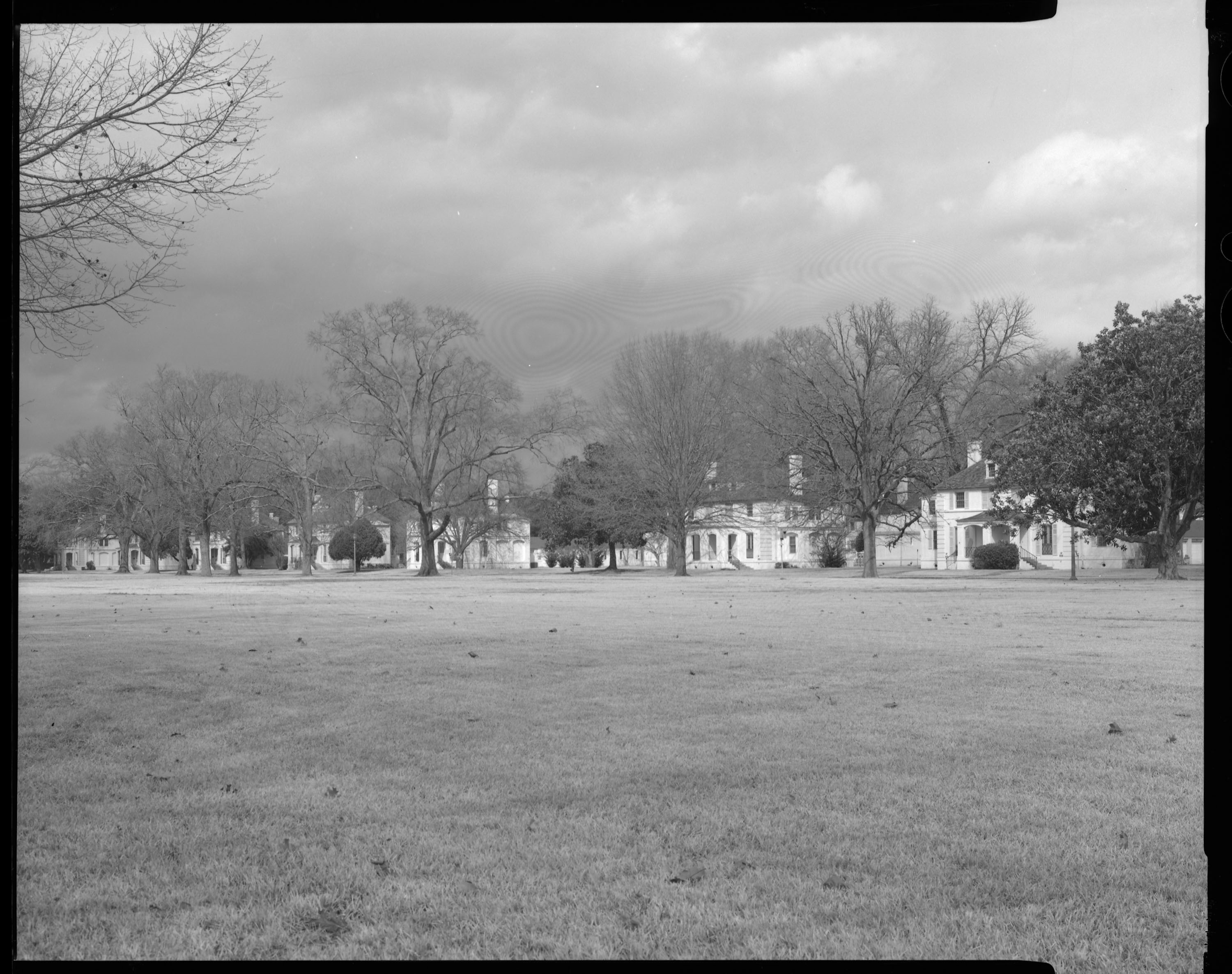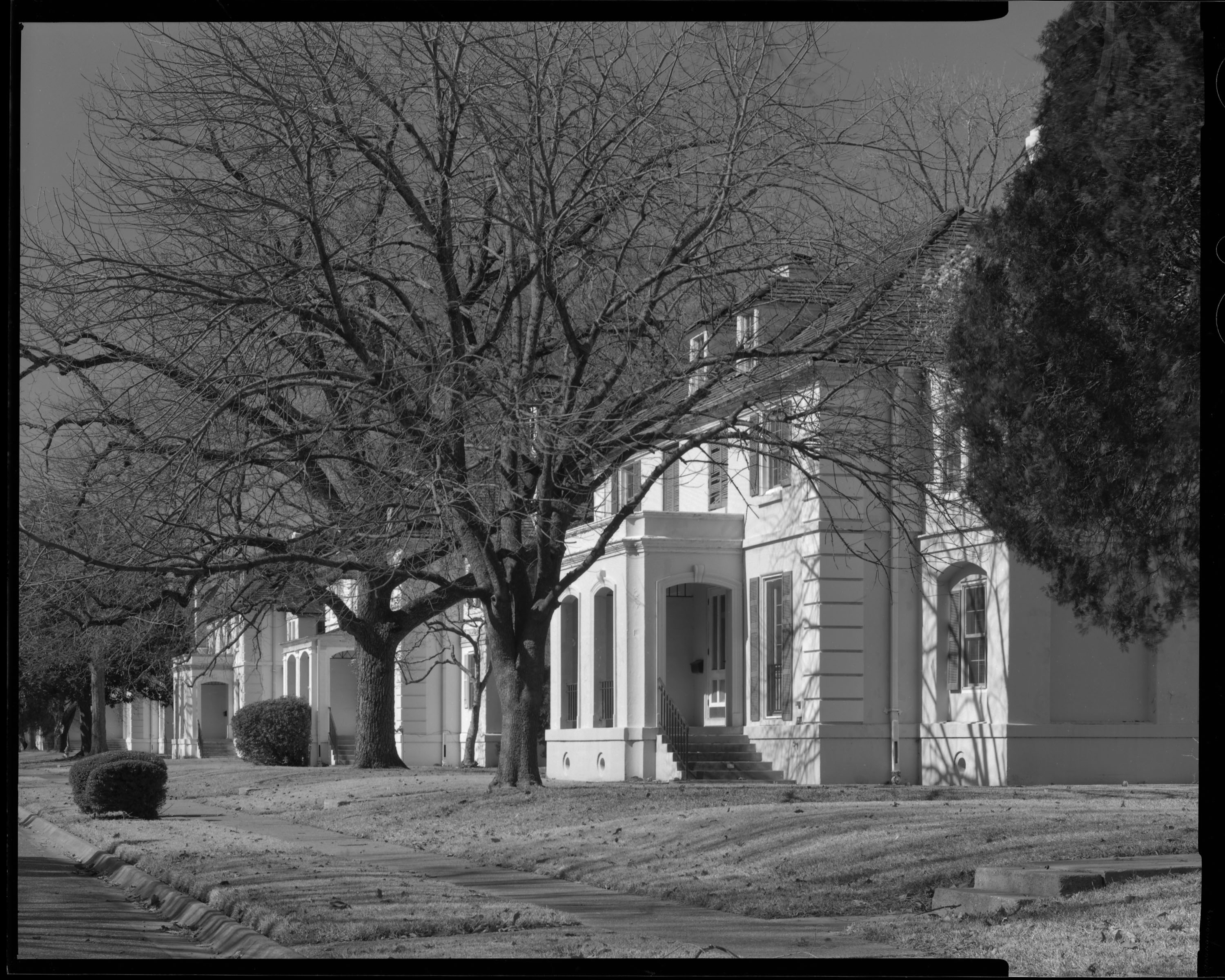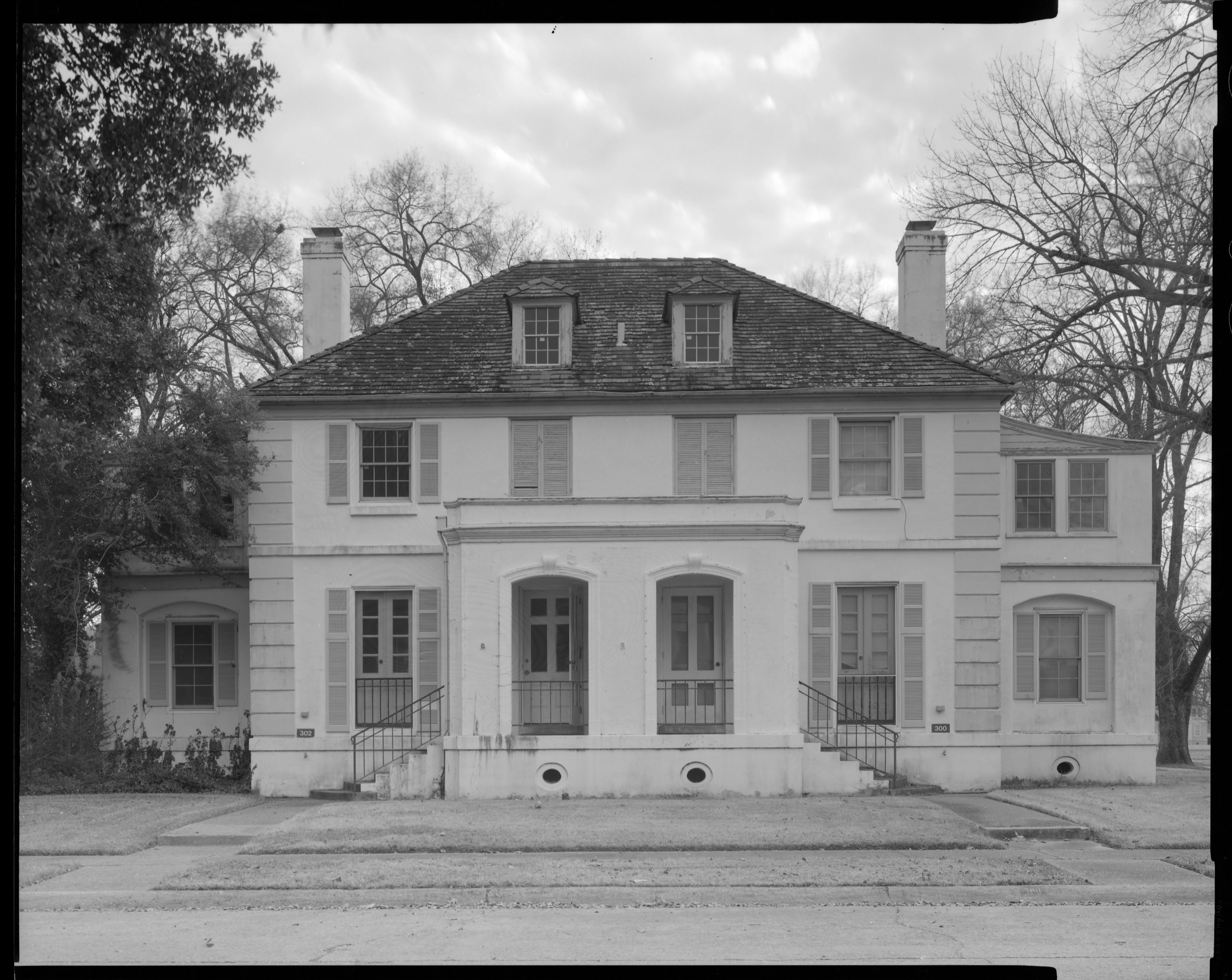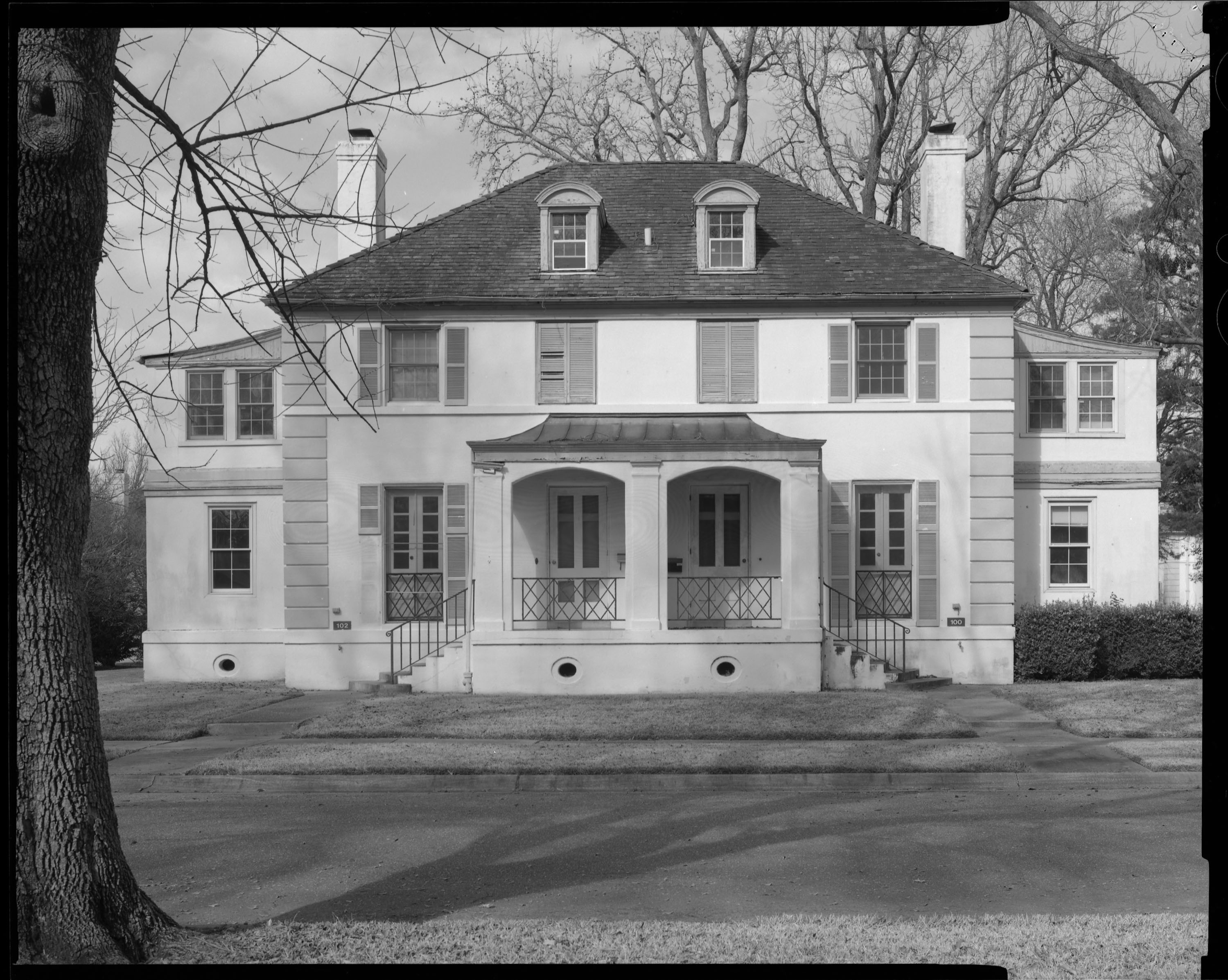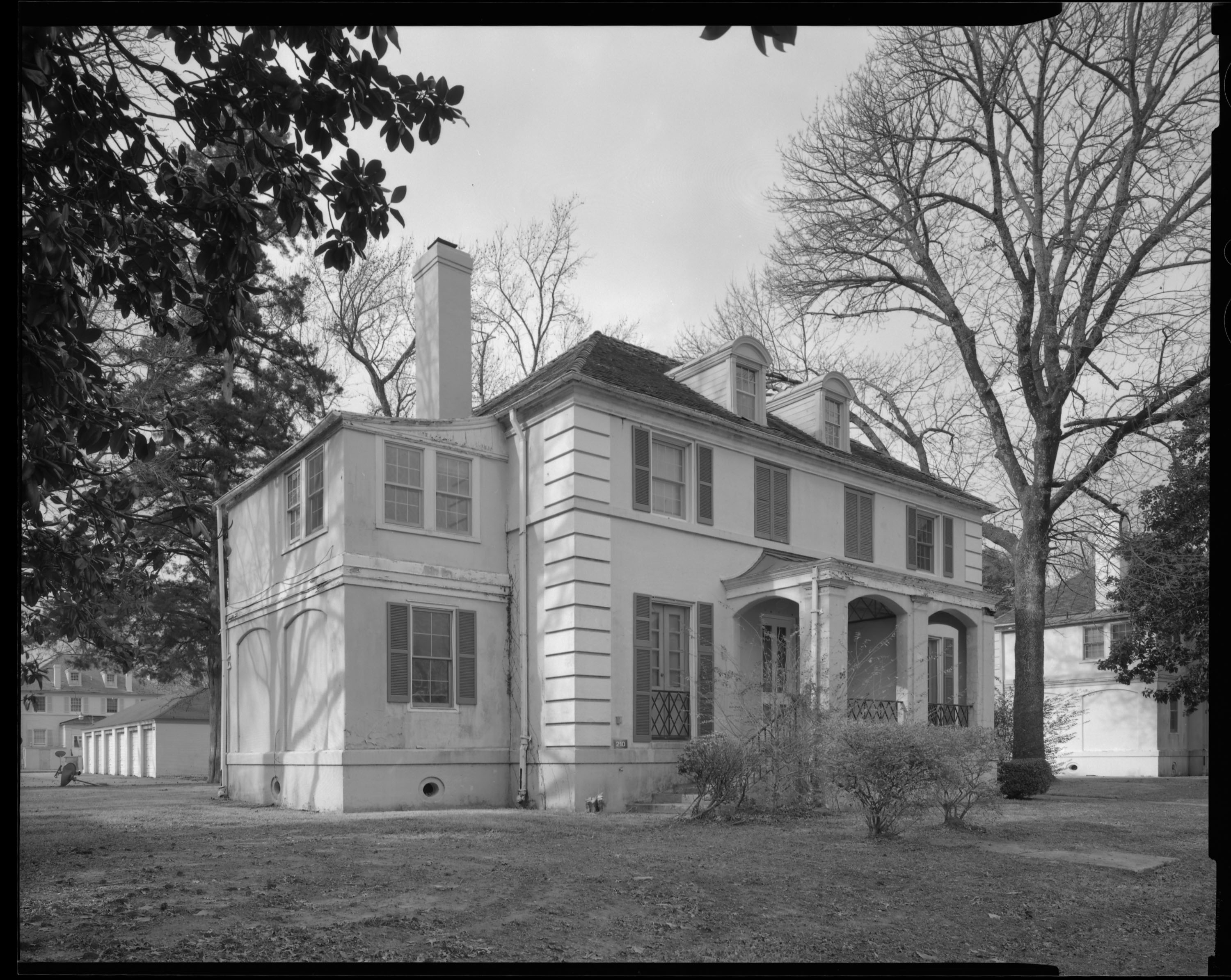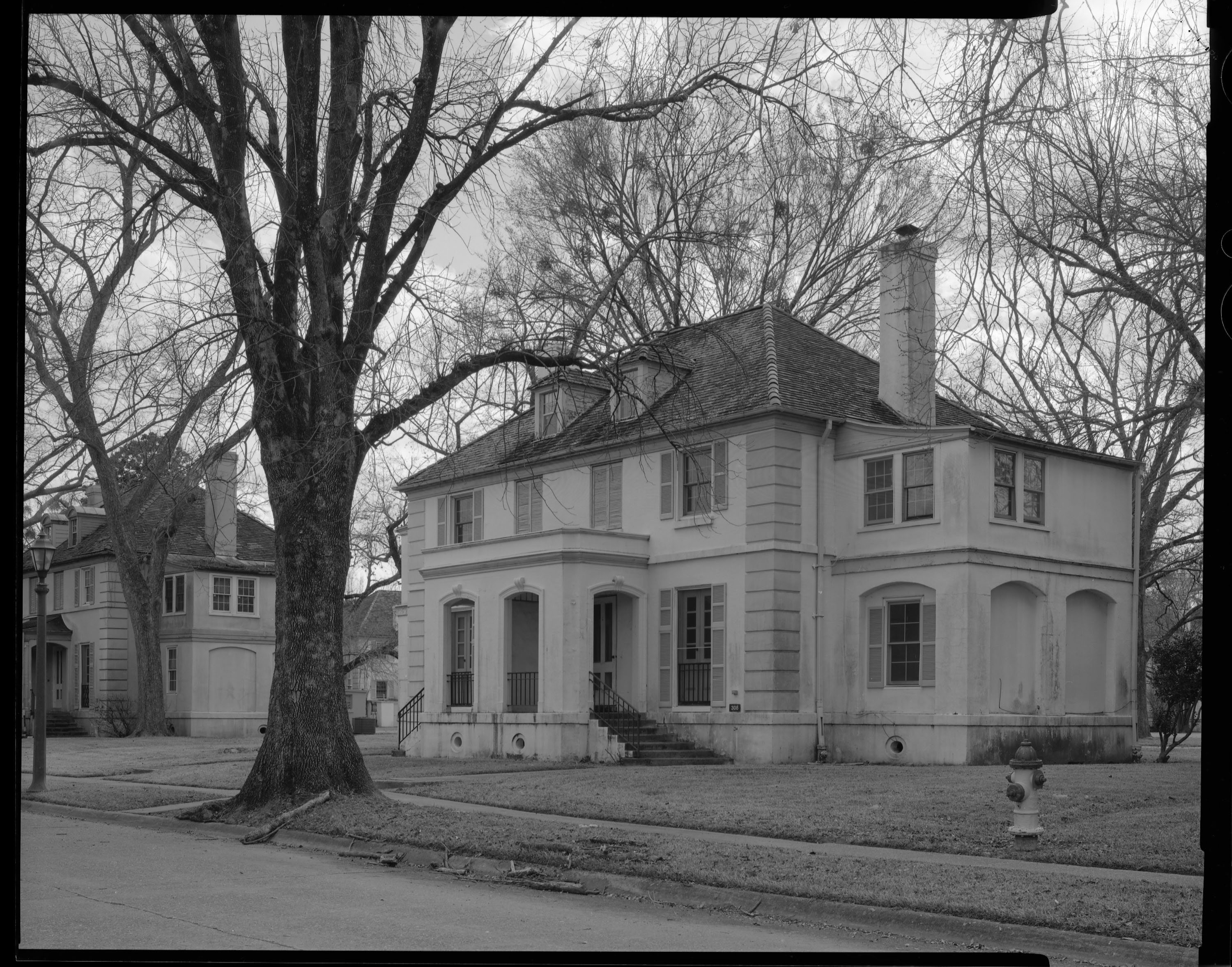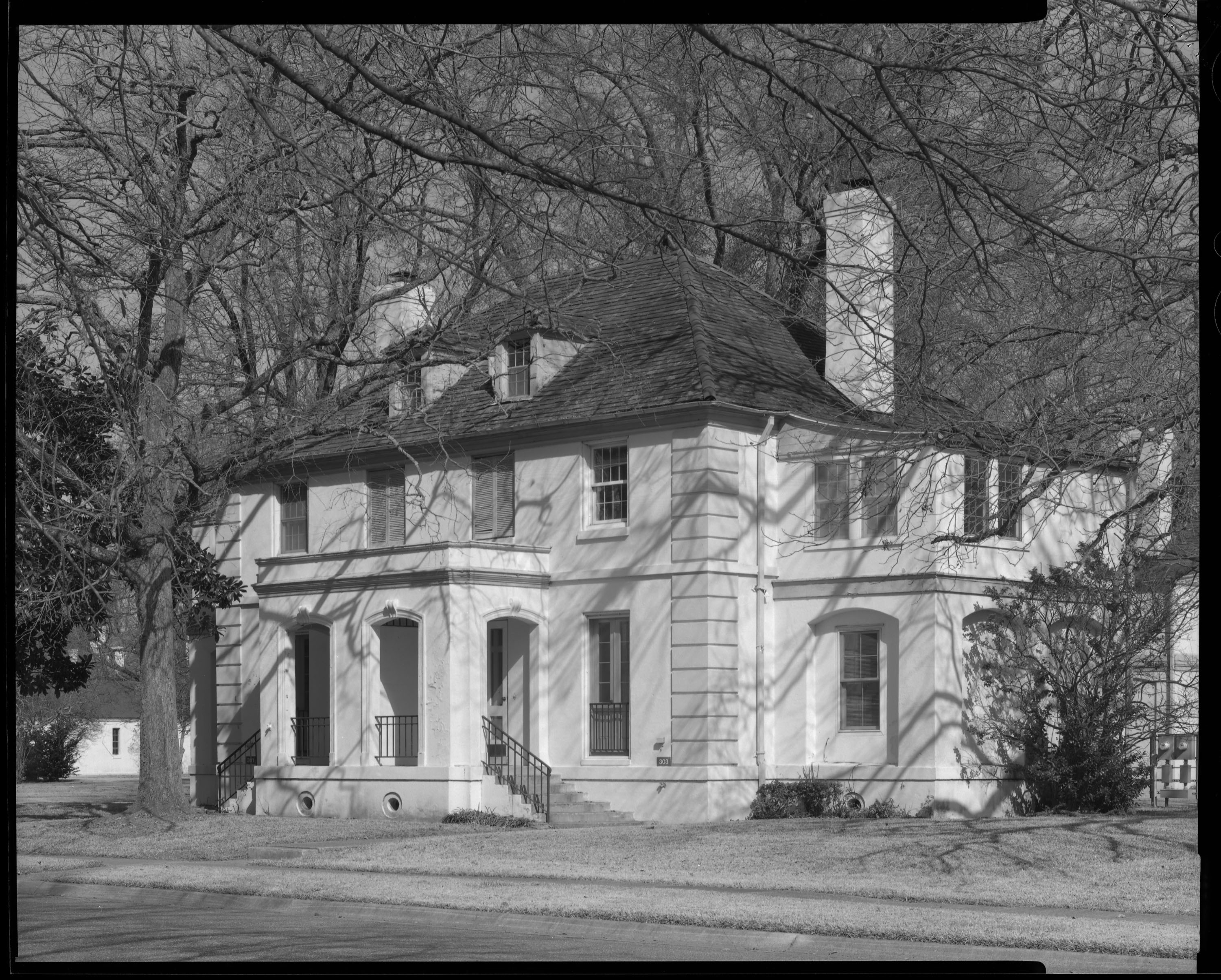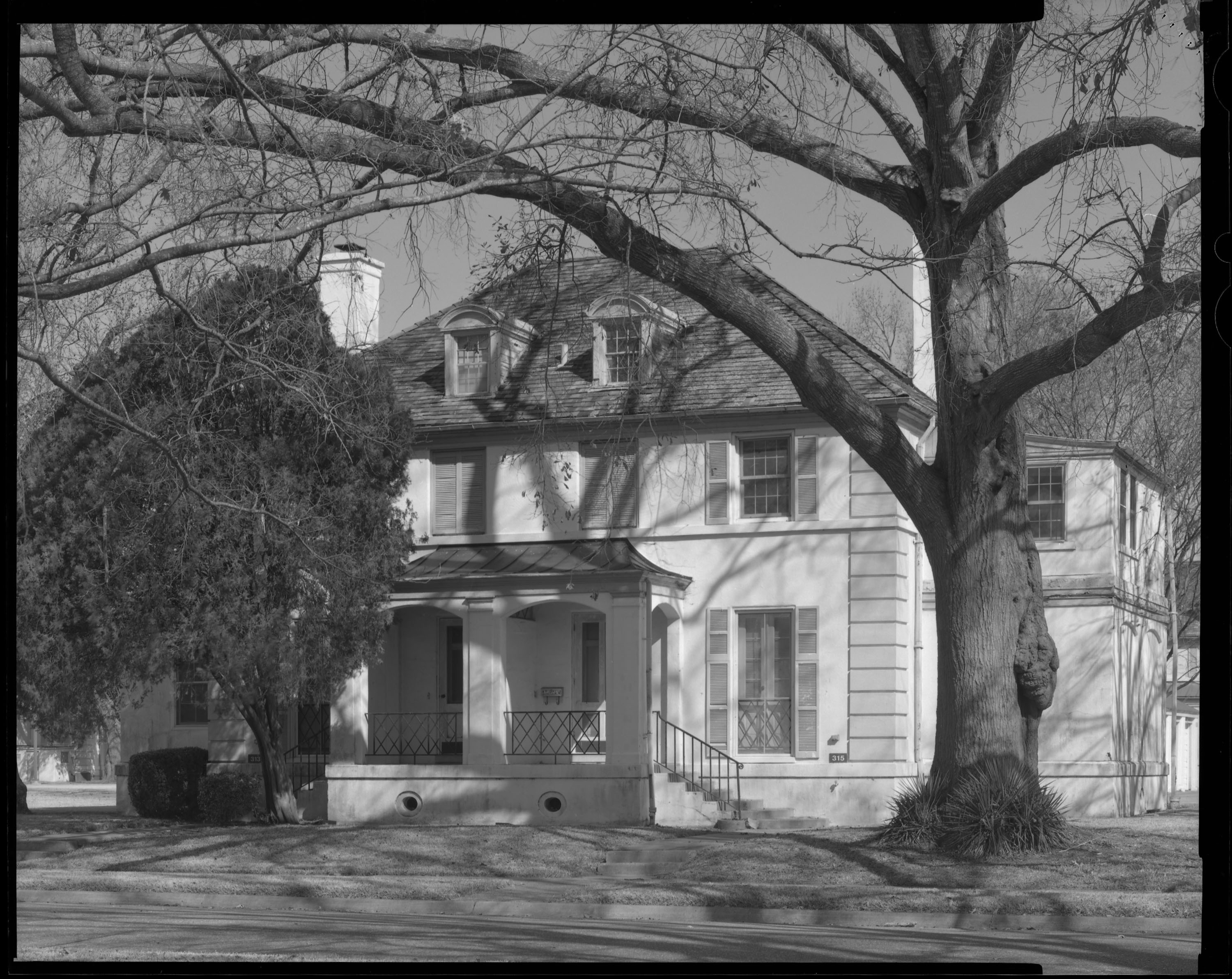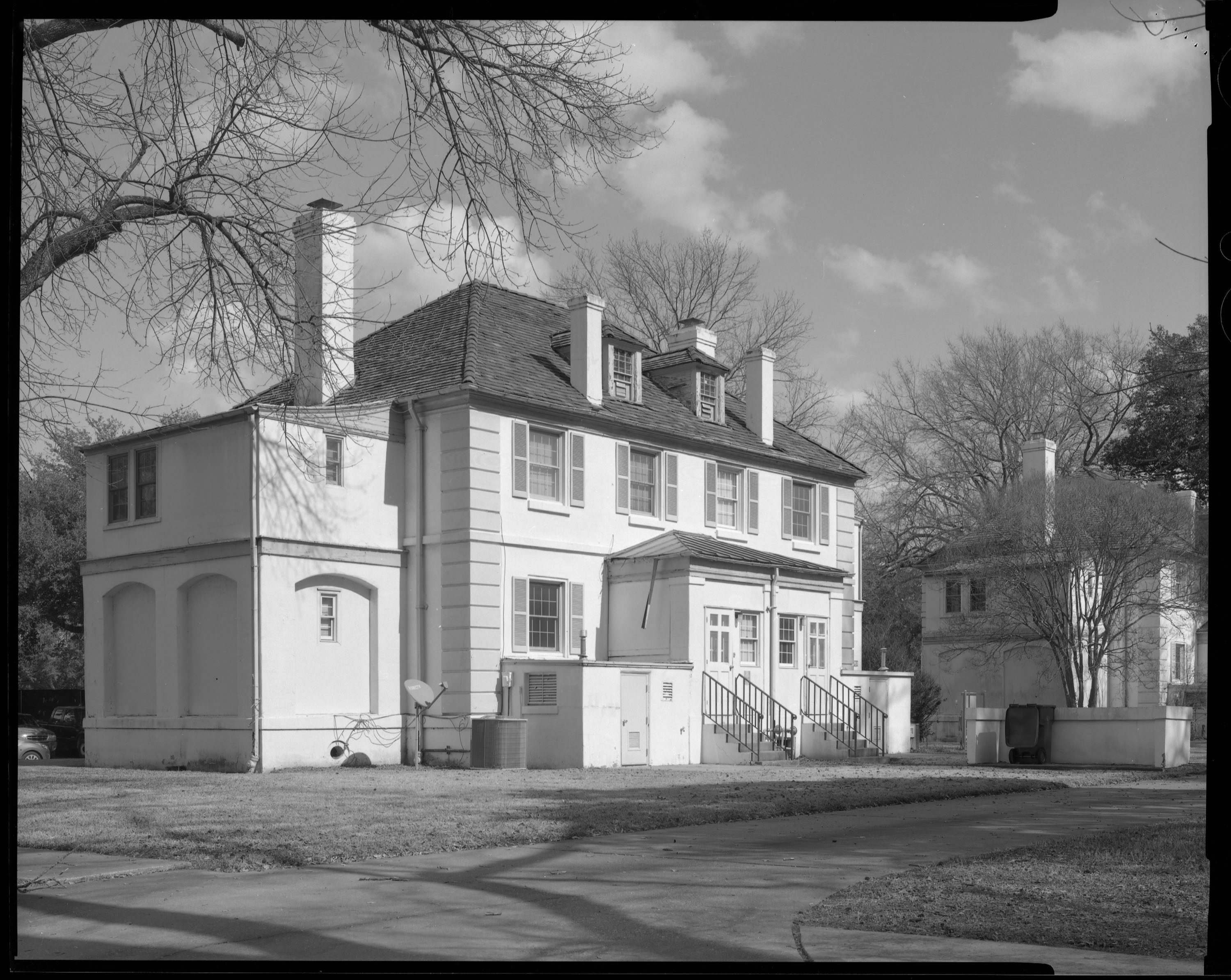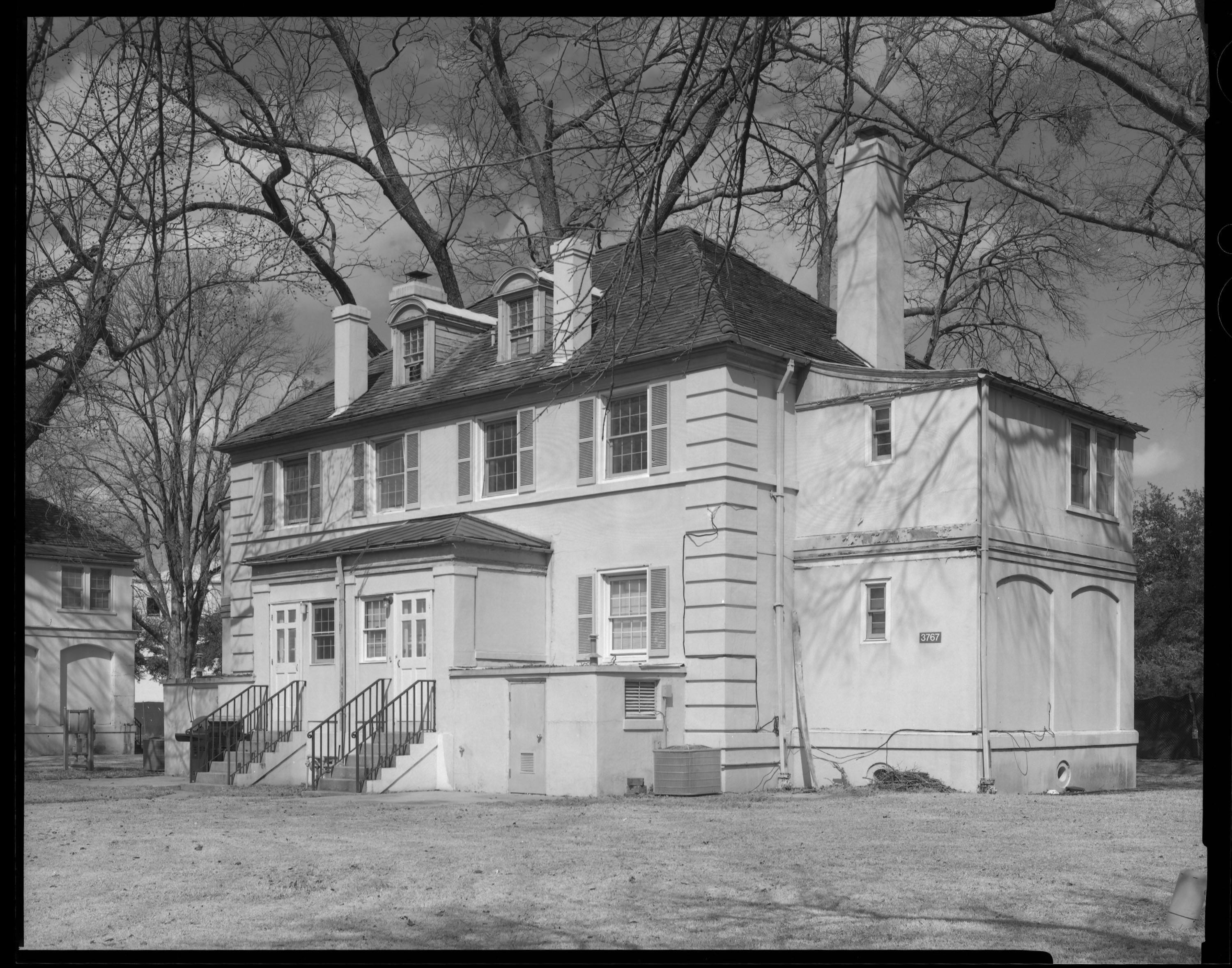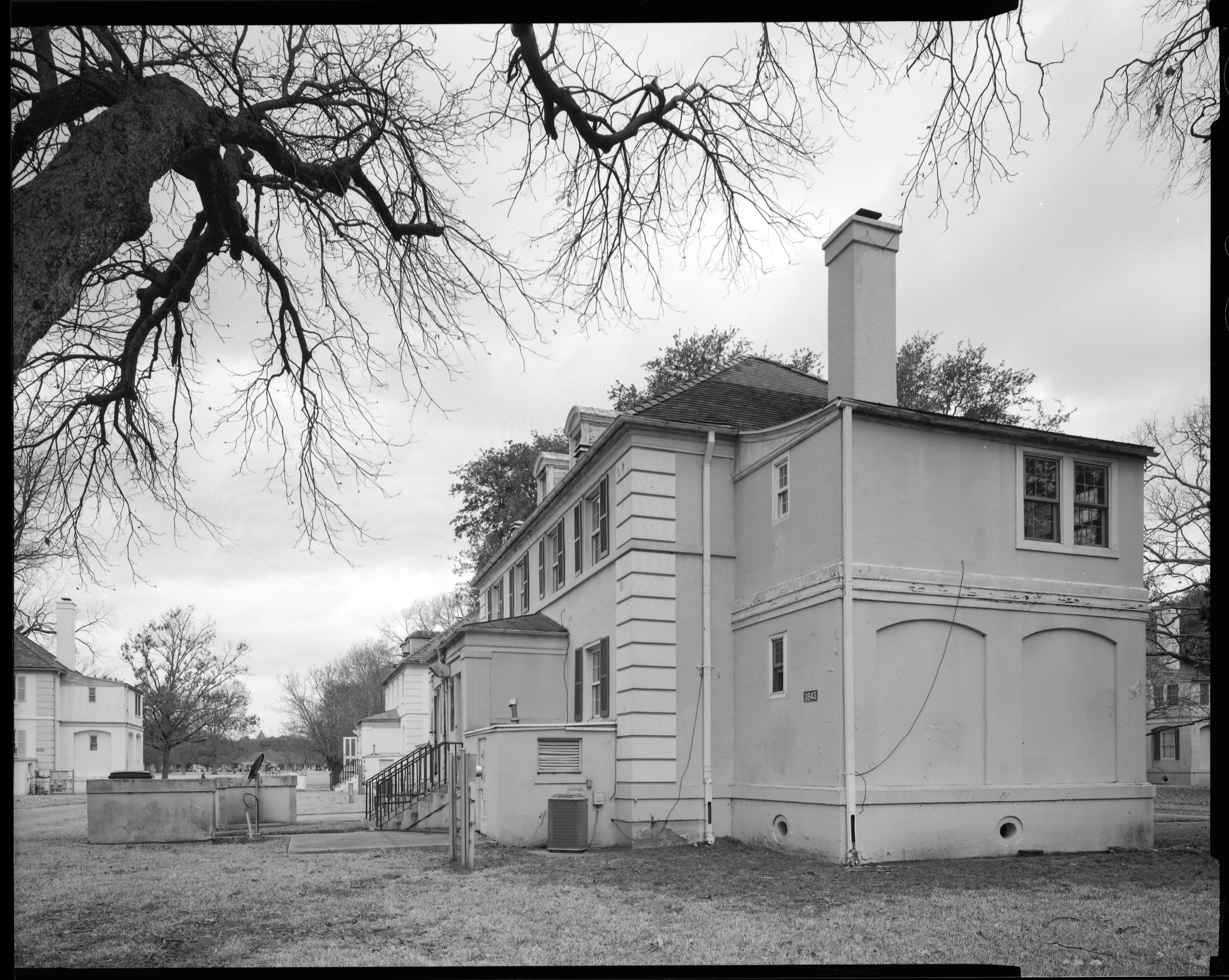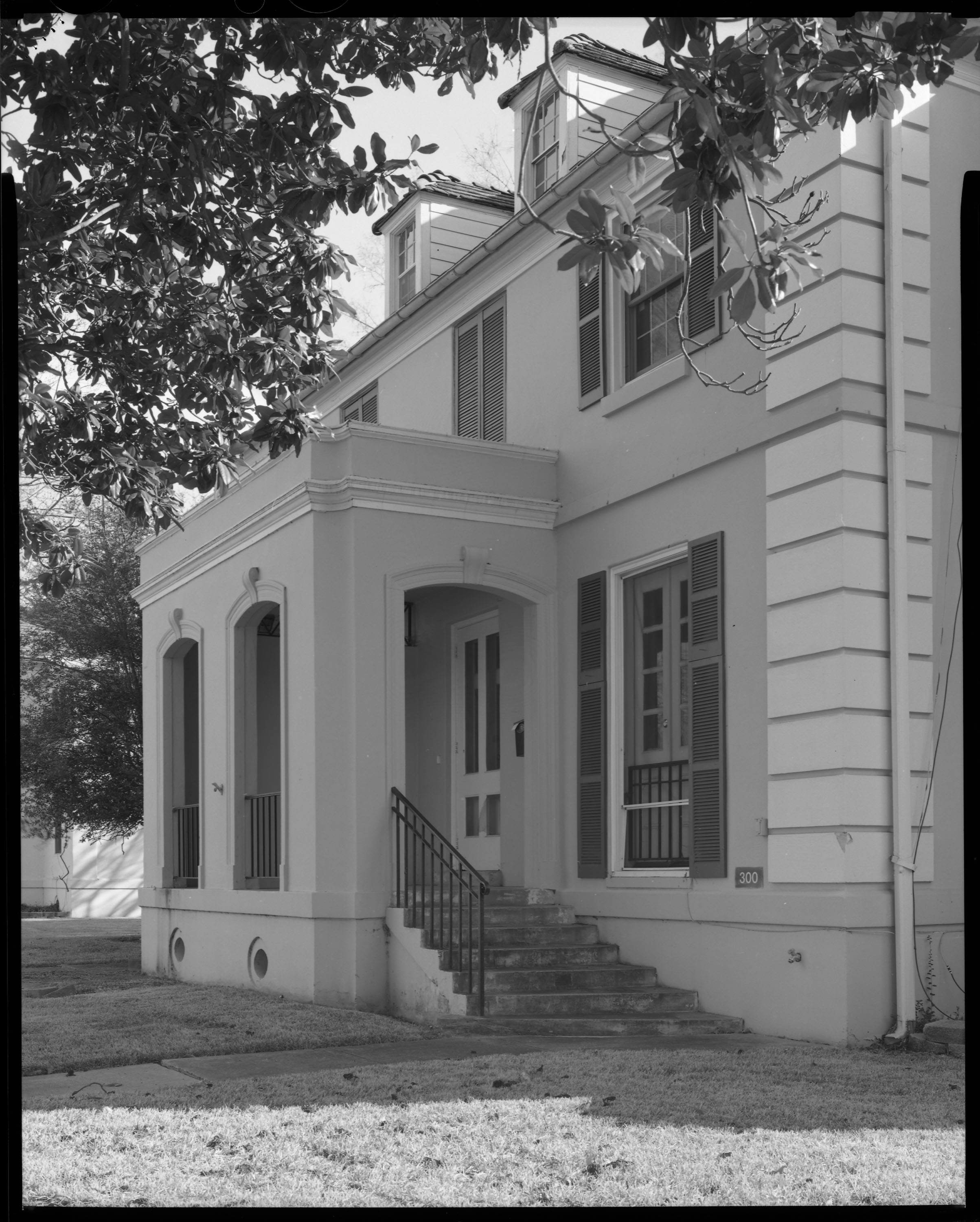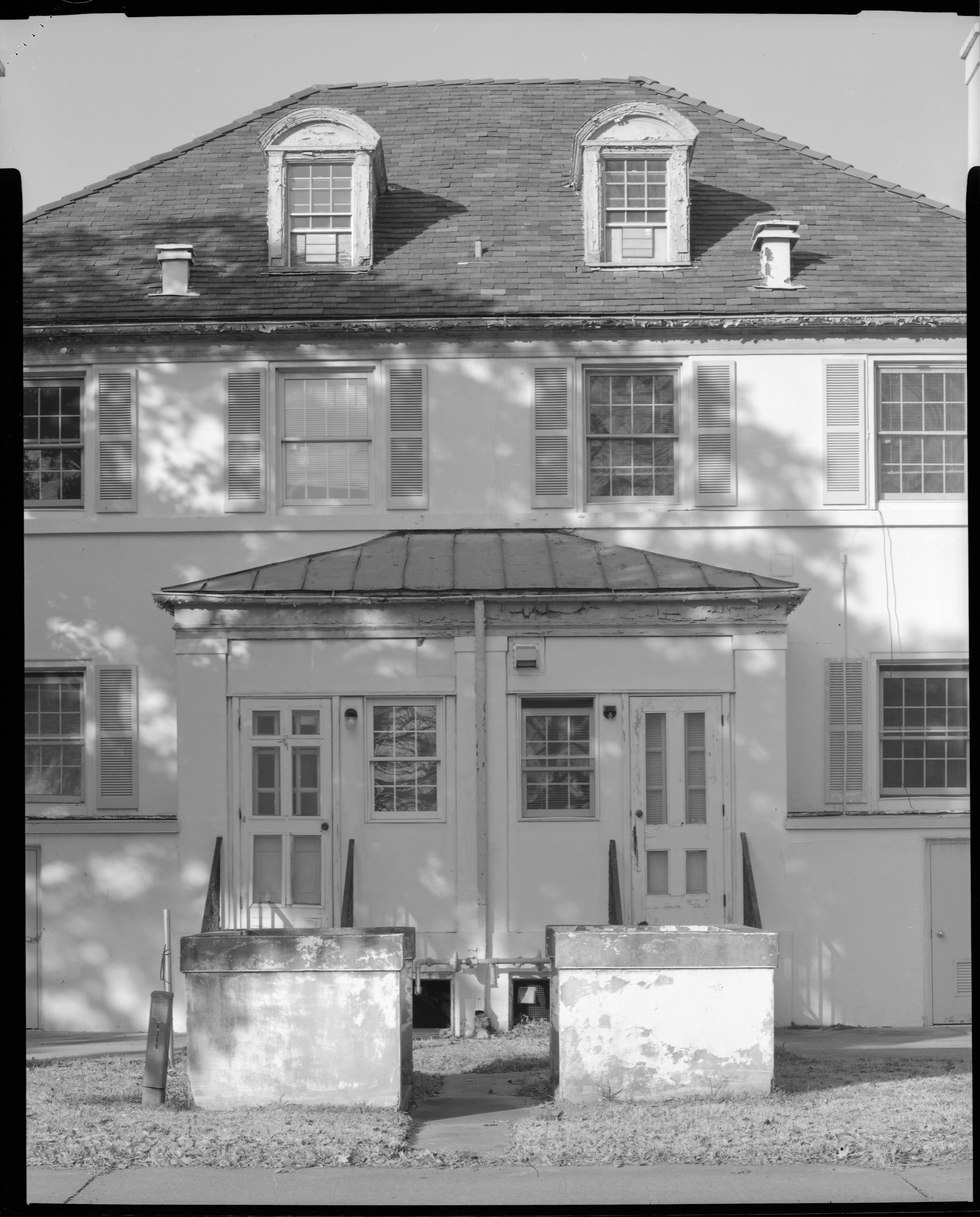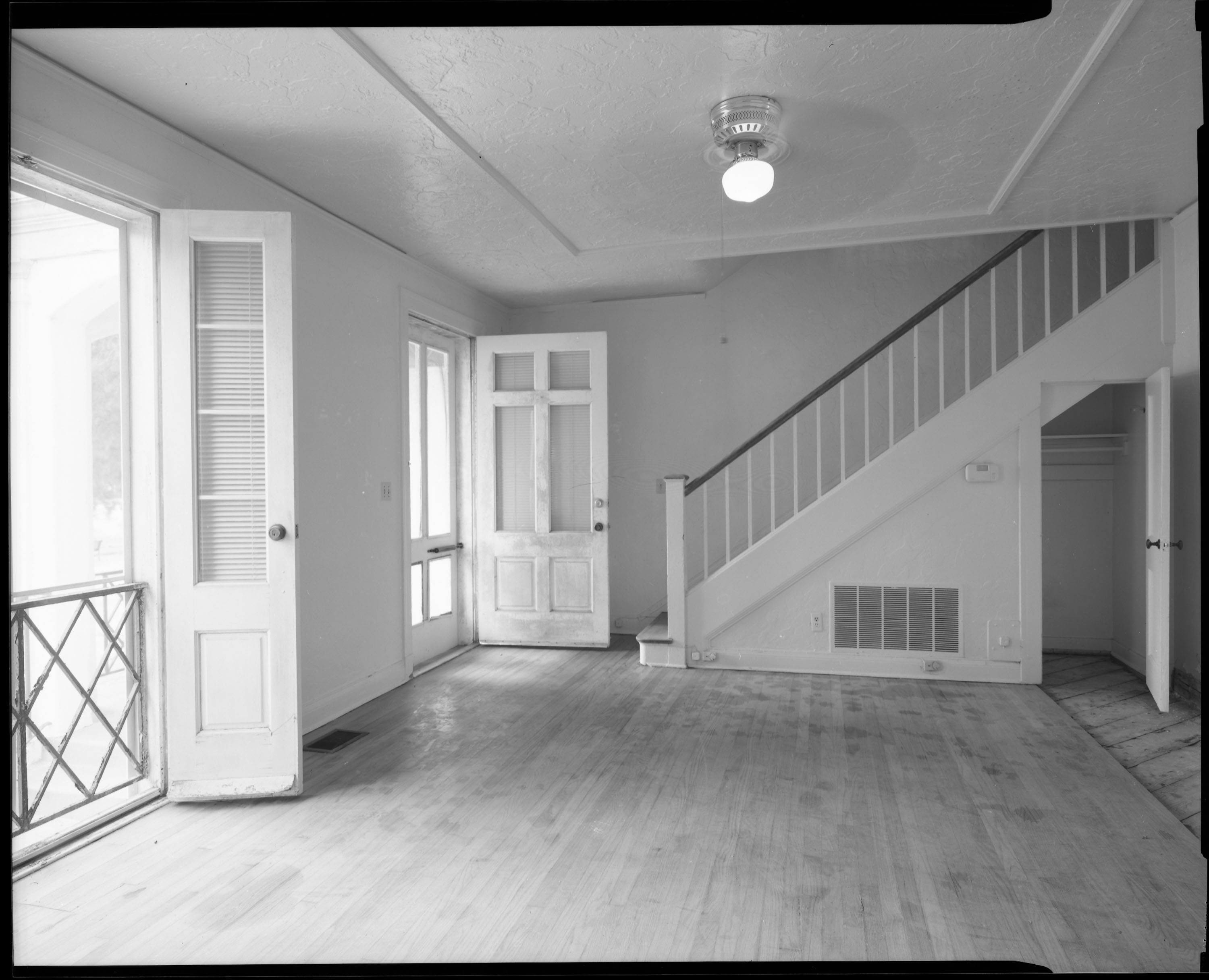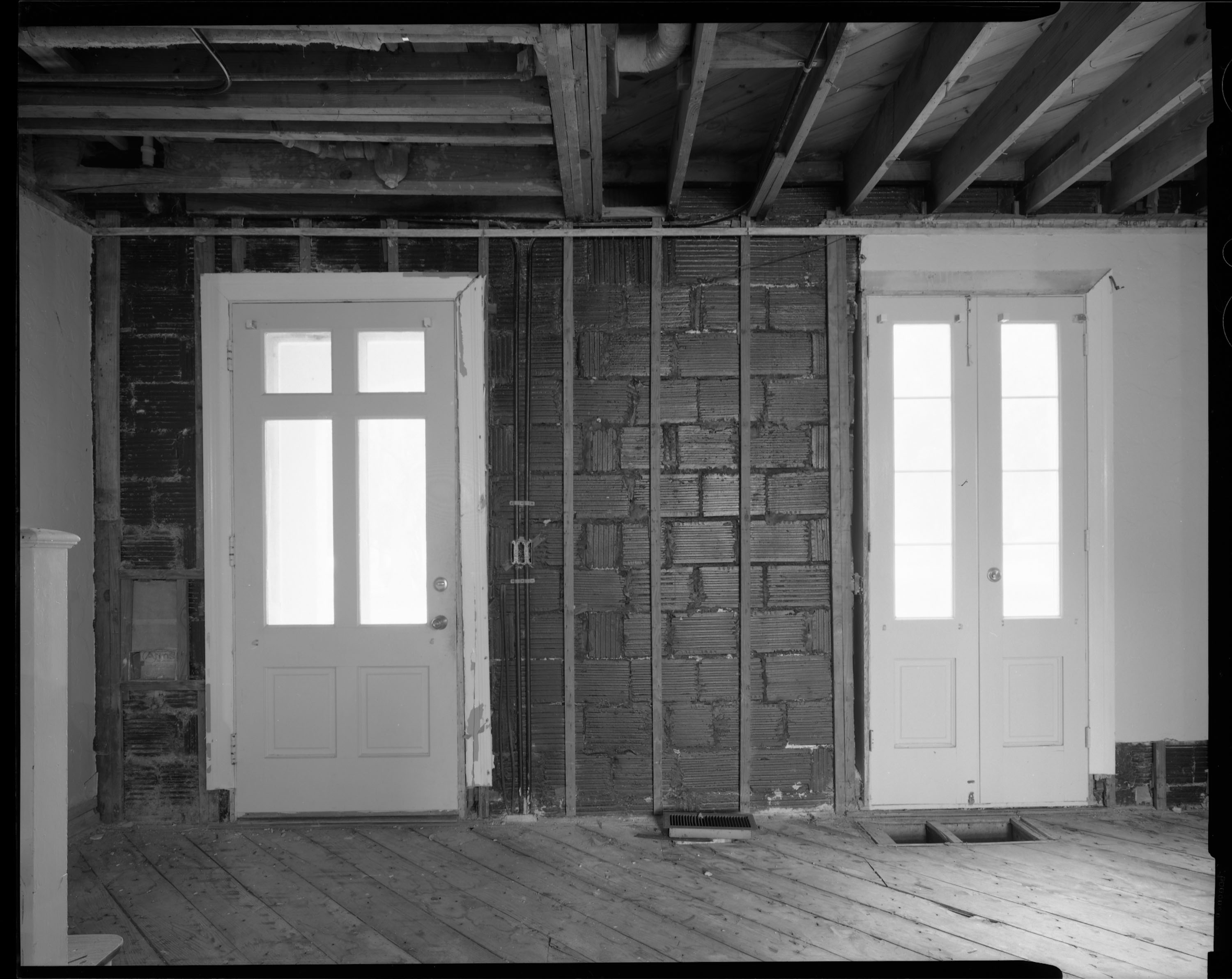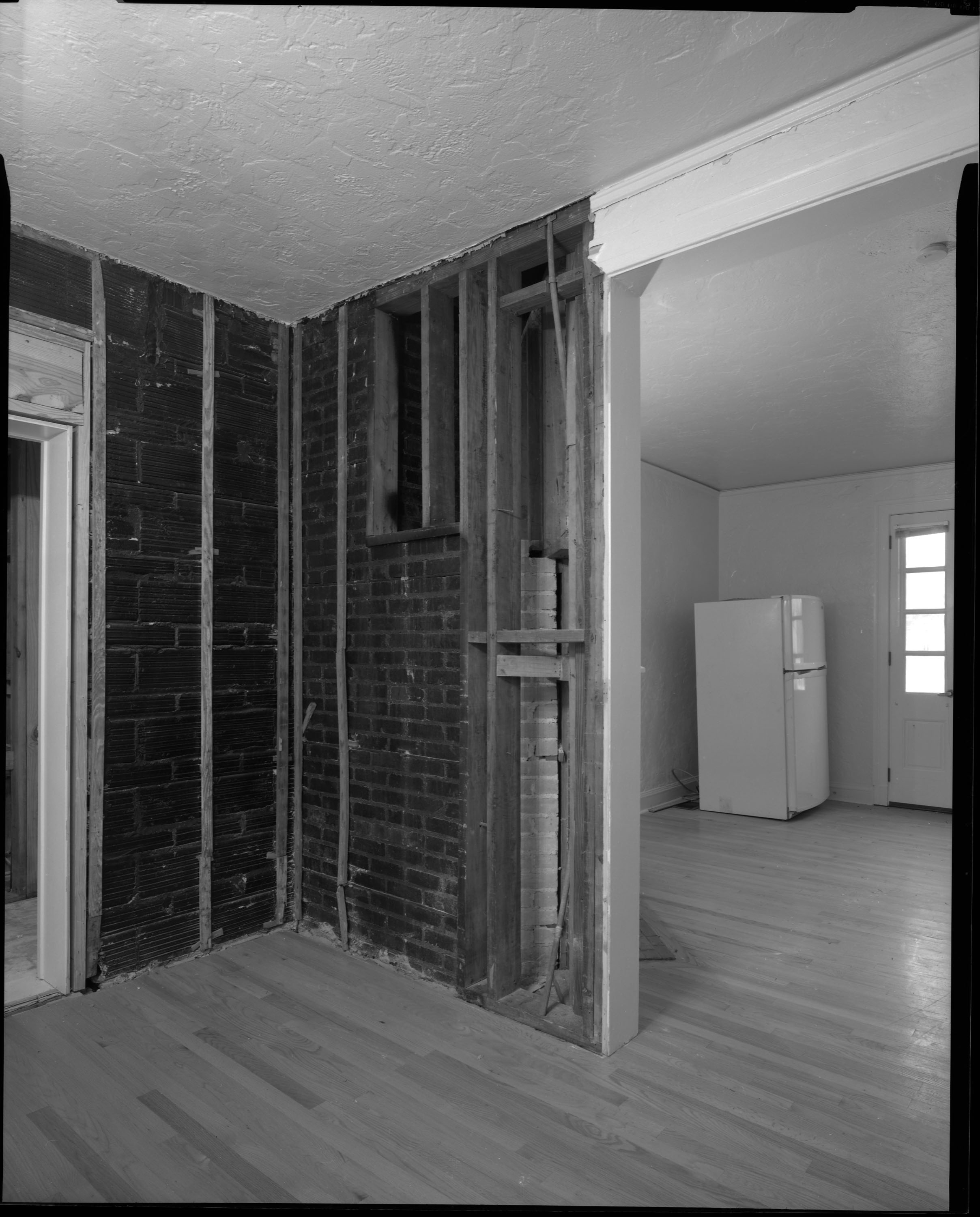In the winter of 2022, I conducted the HABS/HAER photography of a series of duplexes at Barksdale Air Force Base in Shreveport, LA. I worked on this project with my colleagues at Outside the Box LLC to complete the HABS/HAER documentation package of nineteen of the base’s duplexes, built in the early 1930s, together with several of the garages. A devastating winter storm in this southern city in 2021 caused extensive damage to these buildings, part of a larger neighborhood on this residential base.
In the mid-1920s, the U.S. Army Air Forces initiated plans to significantly expand the 3rd Attack Wing, then based at Fort Crockett, Texas. Upon hearing this, the civic leaders of Shreveport, LA began preparing a proposal to provide the necessary land and infrastructure. The City of Shreveport, and the surrounding Bossier Parish, soon identified the present site, cotton fields that were owned by multiple owners. The citizens of Shreveport voted their approval of a $1.65 million bond issue to acquire the land, and in late 1928 the U.S. Army Air Forces gave its approval. The City of Shreveport then got to work acquiring the land, which it transferred to the Army in late 1930. Construction of the new airfield then began in 1931 and was completed the next year. The new base was formally opened in February 1933 and named Barksdale Air Field in honor of World War I veteran flyer and test pilot, Lieutenant Eugene Hoy Barksdale.
The neighborhood of duplexes, built for officers in the Army Air Force’s 3rd Attack Group, is one part of a larger residential area that was listed in the National Register of Historic Places in 1992. The historic district contains more than 300 buildings, most built in a French Revival style, also known French Eclectic. The duplexes occupy one portion of the axial plan of the base, a residential neighborhood that contains approximately 40 two-family duplexes and nearly 20 garages. Sadly, as tastes changed over the past couple of decades, fewer families opted to rent the duplexes and many were left vacant. When the severe winter storms of 2021 caused such extensive water damages, much of the damage went unreported. The extensive water damages and mold, combined with the lack of demand for the houses, led the U.S. Air Force to approve the removal of those that were most damaged.
